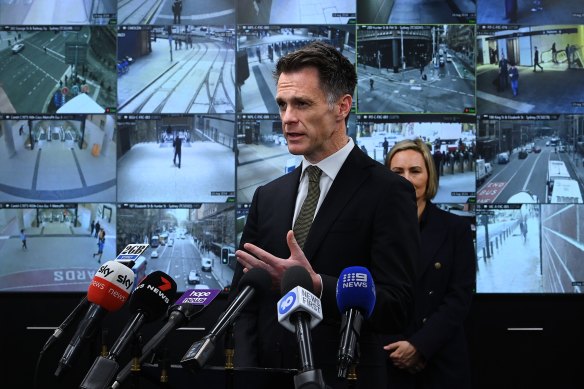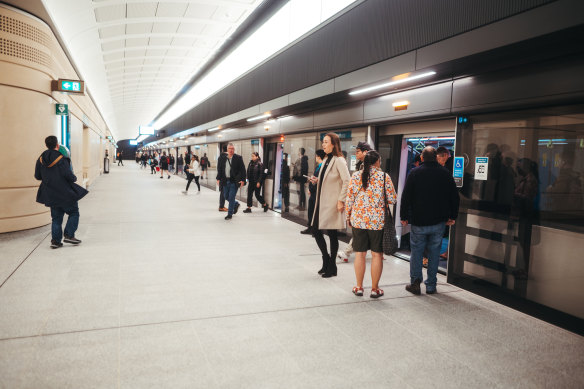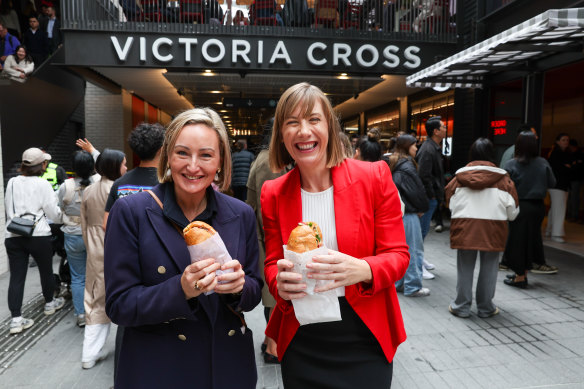- Analysis
- National
- NSW
- Sydney Metro
‘We can re-humanise the city’: The metro’s unrealised promise for Sydney
The fanfare over the new Sydney metro extension through the CBD is replete with superlatives about its significance for the city.
“It is going to change people’s lives,” said Transport Minister Jo Haylen, who compared it to the Harbour Bridge. Passenger Michelle Chan said it would “make Sydney modern”.

Metro transit has the potential to change Sydney’s form and identity, but it is not a fait accompli.Credit: Janie Barrett
Premier Chris Minns called it a “city-shaping piece of infrastructure” that will “change Sydney for the better”, as he credited his predecessors, particularly Gladys Berejiklian, for the vision.
For once, the rhetoric is justified, although it’s not necessarily a fait accompli. Metro transit has the potential to transform Sydney, but it will require more investment, better planning and choices that deliver that outcome.
Minns’ next words were instructive. He said the metro would open up “opportunities that perhaps were unintended but are really important for a united city”, giving the example of families from Sydney’s north-west visiting the breweries of Marrickville, maybe for the first time. Regular, rapid transit would create “unintended but important and exciting linkages across this vast city”.
His use of the word “unintended” was fascinating. Why wouldn’t such linkages be intended? Isn’t that exactly what a metro transport system is all about?

Premier Chris Minns spoke of the metro network creating unintended and exciting linkages across the vast city.Credit: Kate Geraghty
To date, not really. The key messaging from governments has been about mobility: how much time you’ll save on a journey from point A to point B. Clearly, that’s a great thing, but it’s not the end of the story.
Metro transit will start to break down the tyranny of distance that can make Sydney a difficult place to live, work and play. Let us remember that this is a city divided. Geographically, we are separated by water and bridges. Conceptually, we are organised into tribes: north shore, eastern suburbs, the Hills or the Shire. It’s cumbersome to cross those divides, so often, we just don’t.
The metro will start to break down those barriers. For now, it’s just one long line. But next year that line will extend to Bankstown, and in years to come there will be a second one linking Olympic Park with Parramatta and Sydney CBD – in minutes. Sydney Metro architect Rodd Staples has urged the government to “keep digging” and lock future metro lines into the infrastructure pipeline.
Architect and urban designer Philip Vivian argues we haven’t really started thinking and talking about the metro’s true potential, nor put in place mechanisms to capture the value it will create through higher density and closer economic links.

Architect and urban planner Philip Vivian said policymakers had not really started thinking and talking about the metro’s full potential.Credit: Dion Georgopoulos
“The NSW government, on behalf of us, has paid for the infrastructure, but it has led to windfall gains for property owners,” he says. “The extra density around these metro stations should be sold by the state government to developers to help pay for the metro line.”
This is, of course, what they do overseas. But Australia has never embraced systematic value capture, preferring sporadic, after-the-fact rezoning. Minns’ big housing drive has led the government to take control of planning at selected metro stations; Vivian says the state should have seized control at all of them, and from the start.
“We’ve delivered the transport, but I think the city-making vision is still being solidified,” he says. “The state government is saying, ‘We’ll increase the height and density of housing around metro stations to help with the housing crisis.’ But they’re saying that on the eve of opening, and we’re over 10 years into this project.”
Vivian – whose firm Bates Smart designed over-station buildings at Pitt Street South and Victoria Cross – says the obvious comparison is Paris’ Grand Express, a $58 billion mega-project of metro lines linking the suburbs with central Paris. It is vision-led, he says, with an explicit purpose of connecting areas not well-served by public transport, reducing social inequality and developing areas around stations.

Transport Minister Jo Haylen and Member for Coogee Marjorie O’Neill, left, get a banh mi at North Sydney.Credit: Edwina Pickles
That’s not to say this element has been entirely missing in Sydney’s version. As the Herald reported at the weekend, one of the big choices in this project was whether to route through Waterloo or the University of Sydney. A former Coalition transport minister said the government went with Waterloo “to gentrify the area and uplift the social housing”.
But the most significant change might be Sydney’s relationship with the car. Despite leading the country in public transport use, we are still a car-dependent city in the 1950s American tradition – more LA than London. If people can walk or cycle to the metro, without needing a car, the city will take a big stride toward decarbonisation. “In doing that, we can re-humanise the city,” Vivian says.
And with less traffic on the road, better transport and more green spaces in these new station precincts, people may become more relaxed about the growth and density they are being asked to accommodate for the future. At present, it is gold-plated infrastructure for, all told, not that many people.
None of this will happen overnight, but Vivian says the Parisian experience shows us you can transform a city “in an incredibly short period of time”. London demonstrates “we could increase our density without losing our amenity of our residential areas and our lifestyle”.
Such opportunities aren’t simply afterthoughts; they should be baked into the raison d’être for Sydney’s next metro ventures.
Start the day with a summary of the day’s most important and interesting stories, analysis and insights. Sign up for our Morning Edition newsletter.